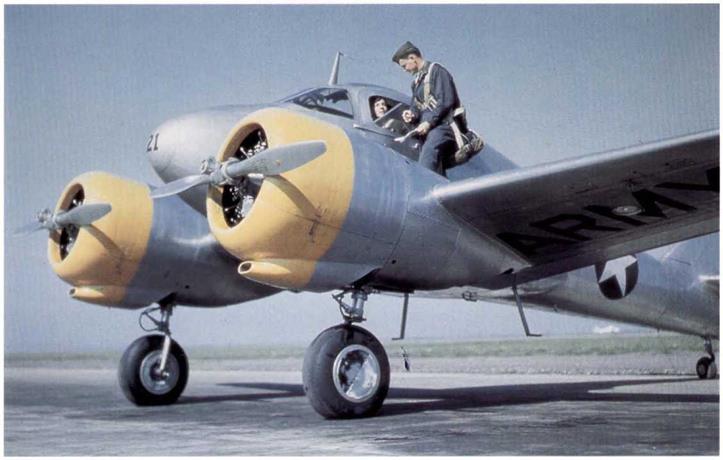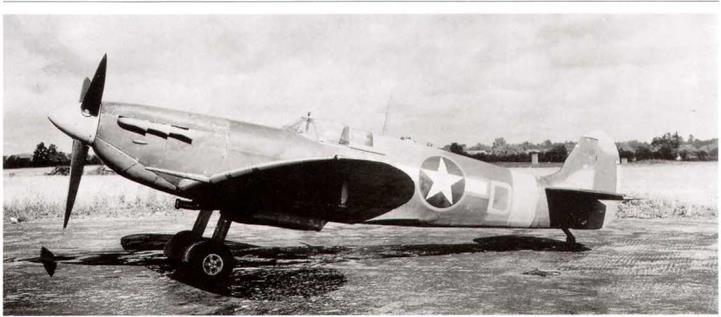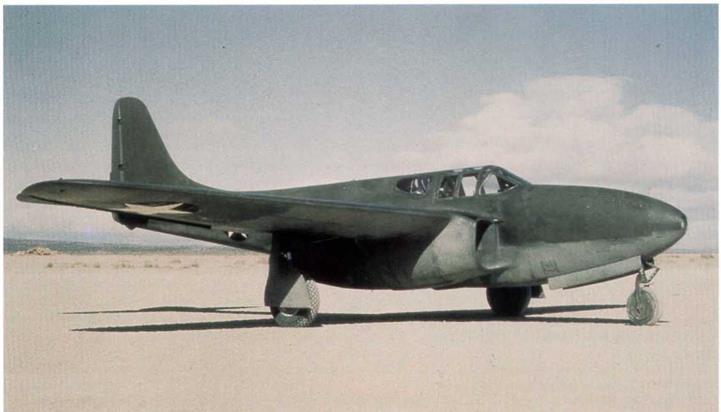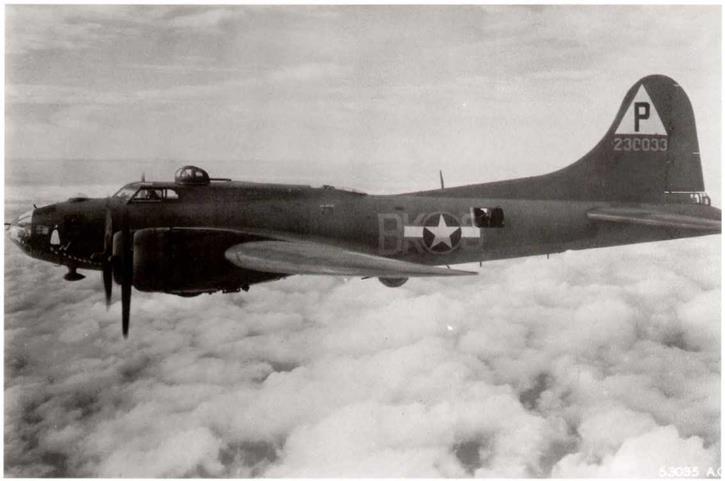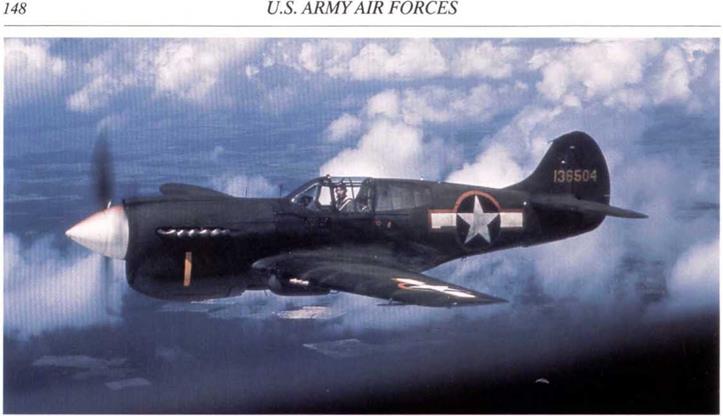Special black paint investigated for night camouflage, June 1943
On June 29, 1943, the Chief, Req. Div., OC&R (Wash.), requested that the AAF Board, AAF School of Applied Tactics, Orlando, Florida, comment on the use of special black paint for night camouflage. The AAF Board replied that, since the standard olive drab camouflage gave an equally effective protection against searchlights and was better in bright moonlight, special camouflage paint was not only of no particular value, but was extremely undesirable in that it would limit the use of those aircraft only to night operations.
(It seems that this request arose as a result of a report from Eglin Field, No. 3-43-31, “Test of Night Camouflage”, dated June 5,1943, No copy of this report has been found, together with many others issued by Eglin Field during World War II. The author submitted a request for copies of all of these reports in 1967. He was informed that all of the remaining copies were in such a poor state that they could not be copied by any means available at that time, and the author would have to go to Eglin Field to review them. Unable to do so at that time, the author finally got to Eglin Field in 1992, only to find that the current librarian had no record of the location of any of the reports!).
|
Curtiss AT-9-CS, 41-122K?), has yellow cowls, and is still carrying the “US Army" markings under the wings, but has the 1942-1943 fuselage insignia. (USAF via Gerry R. Markgraf) |
White bars and a red border added to the star insignia by AN-I-9a, June 29, 1943.
During combat over North Africa in support of Operation TORCH, it was found that the AAF star insignia was being confused with the Luftwaffe cross at distances exceeding normal resolution (this had also happened during World War I, and led to the adoption of the tricircle insignia for all AEF aircraft in France).
On June 15, 1943, Eglin Field, was directed to conduct tests on modifying the AAF insignia so that it would not be confused with enemy insignia at distances exceeding normal resolution.
As it so happened, tests had already been conducted earlier and had been reported in Service Test No. 3-42-18, “Revision of Aircraft Marking”, dated May 9,1943. These tests had been run to determine the cause of the confusion at distances (the results agreed with those reported in McCook Field Report No. 1305, dated August 20, 1920, showing that at a distance the white star of the insignia blended into a circular blob).
The tests had shown that a long narrow rectangle added to the star insignia proved to be discernible at a distance twenty-five percent farther than the Luftwaffe cross or the AAF star insignia.
Three slightly different versions of the design were finally proposed. The finally selected design of the new insignia was not symmetrical, but it was considered that this was outweighed by its ease of construction, an important consideration in view of the huge number of aircraft that would have to have their insignia repainted in a hurry.
|
Supcrmarine Spitfire Mk. Vc, BM181, aircraft MX-D, of the 67th Rec. G, at Membury, England, in July 1943. It carries the new star and bar insignia, outlined in red, adopted on June 29, 1943, to Spec. AN-1-9A. (USAF) |
Four P-47s were painted with different insignia; one had the existing star insignia, one the proposed star with the white rectangles, one the Luftwaffe cross, and the final aircraft had the Japanese hinomaru red disc. Flight tests on June 18, 1943, showed that the proposed new design showed up as a rectangle at varying distances and left no confusion of recognition.
A report. No. 3-42-18-2, “Test of Aircraft Insignia”, dated July 7, 1943, was submitted to HQ USAAF, recommending that the new rectangular insignia be adopted as standard. However, in a surprising show of speed, the new insignia had already been adopted by both the Army and Navy, leading to a revised AN-I-9a, dated June 29, 1943. (Contrast this with the lethargy shown on the adoption of a new camouflage scheme for anti-submarine aircraft, as described earlier).
|
Bell XP-59, no serial visible, prior to May 1943, at Muroc Army Air Base. This was the AAFs first jet tighter, using British designed engines. Its rather poor performance prevented it being used operationally, but it was used for training the AAFs first jet pilots. (USAF) |
|
Boeing B-L7F-85-BO, 42-30033, aircraft BK-Sof the 546th BS, 384th BG, shows the new red outlined insignia, together with the newly adopted “P” in a white triangle showing it belongs to the 1st Combat Bomb Wing, Eighth Air Force. The code letters on the fuselage are in neutral gray. (USAF) |
The revised An-I-9a changed the design to the following:
D-l. Construction. – The national insignia shall be an insignia white five pointed star inside an insignia blue circumscribed circle with an insignia white rectangle, one radius of the blue circle in length and one-half radius of the blue circle in width, on each side of the star and the top edges placed to form a straight line with the top edges of the two star points beneath the top star point; and an insignia red border one-eighth radius of the blue circle in width outlining the entire design. The construction of the star is obtained by marking off five equidistant points on the circumscribed circle, and connecting each point to the two non-adjacent points. See Figure 1. The national insignia shall be applied so that in the normal flight attitude of the airplane one point of the star points upward and perpendicular to the line of flight on vertical surfaces or forward and parallel to the line of flight on horizontal surfaces. A gray color, obtained by mixing one part of insignia white with one part of light gray, shall replace the insignia white on applications to upper wing surfaces when finished semi-gloss sea blue.
D-2a(2). Size. – The insignia shall have a blue circle with a maximum diameter of 60 inches and a minimum diameter of 30 inches. Standard sizes shall have blue circle diameters in multiples of 5 inches. The blue circle diameter selected shall be the standard size which is closest to, but does not exceed 75 percent of the distance between the leading edge of the wing and the aileron cutout at the point of application.
D-2b. Fuselage Insignia.
D-2b(l). Location. – On patrol seaplanes, the insignia shall be applied to each side of the bow, in such position that it is completely visible when the plane is water borne in normal load conditions.
|
|
|
|
|
|
|
|
|

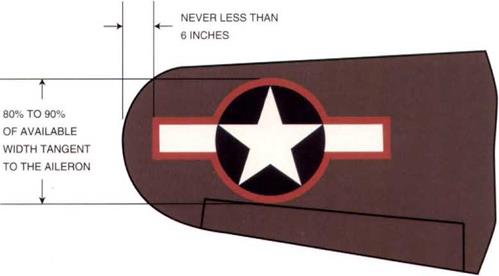
![]()

|
|
|
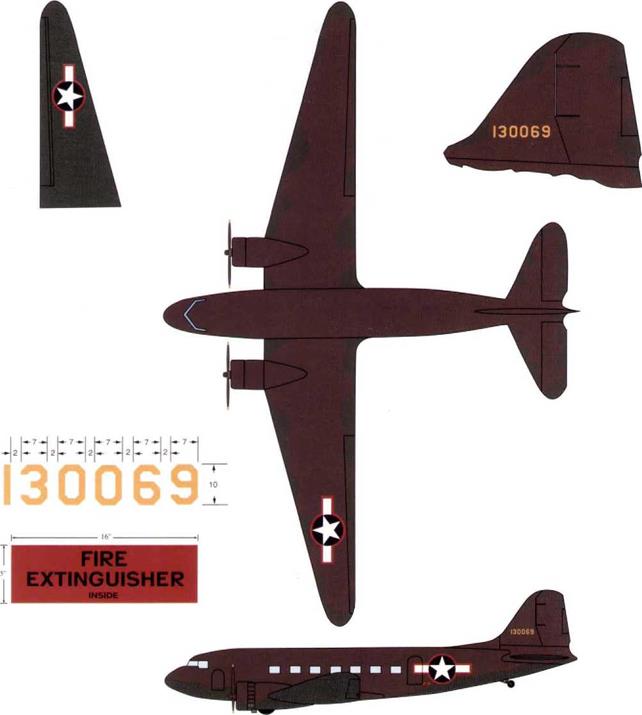
|
Curtiss P-40E-CU, 41-3650, was originally built Гог the RAF, but was taken over by the AAF while on Ihe production line. Thus, it is in standard AAFcamouflage, including rather heavy medium green blotches on the wings and tail surfaces. There is a yellow “1” on the cowl side, and the aircraft is using the new, but short-lived, red-outlined star and bar insignia of June 29, 1943. |











